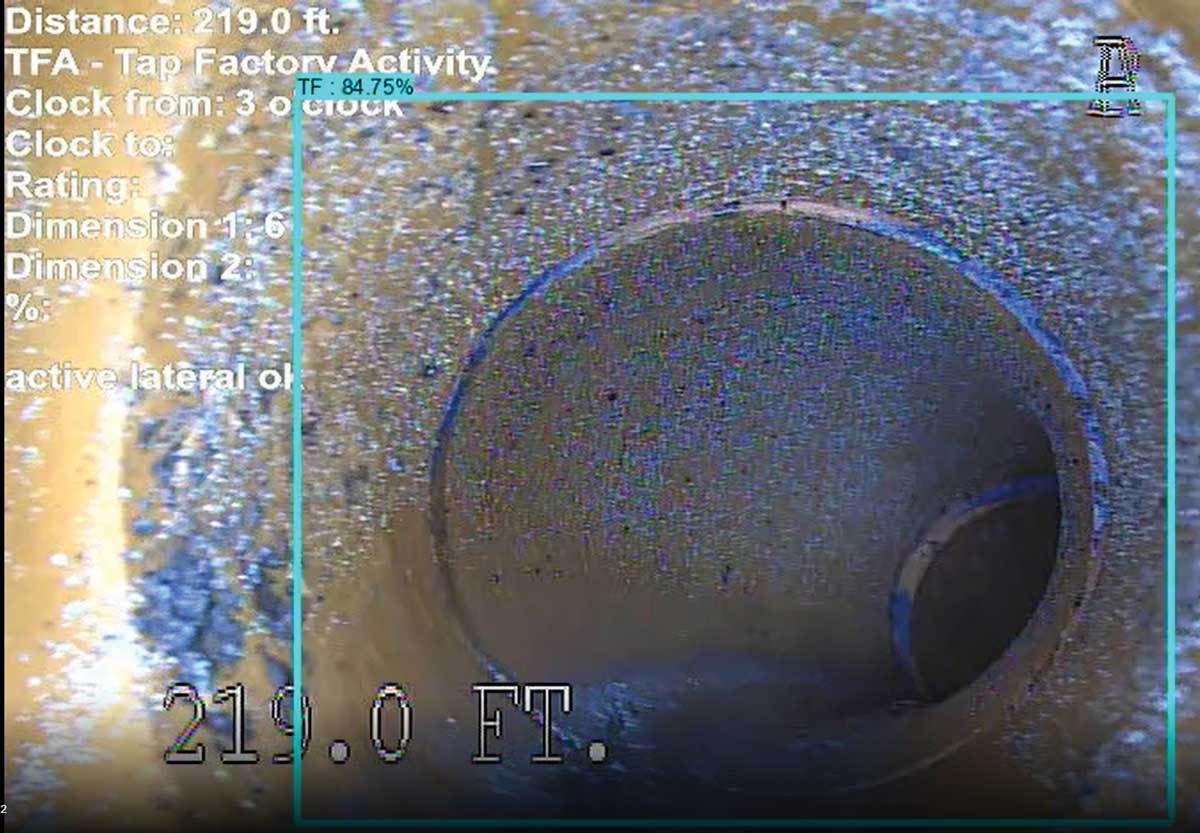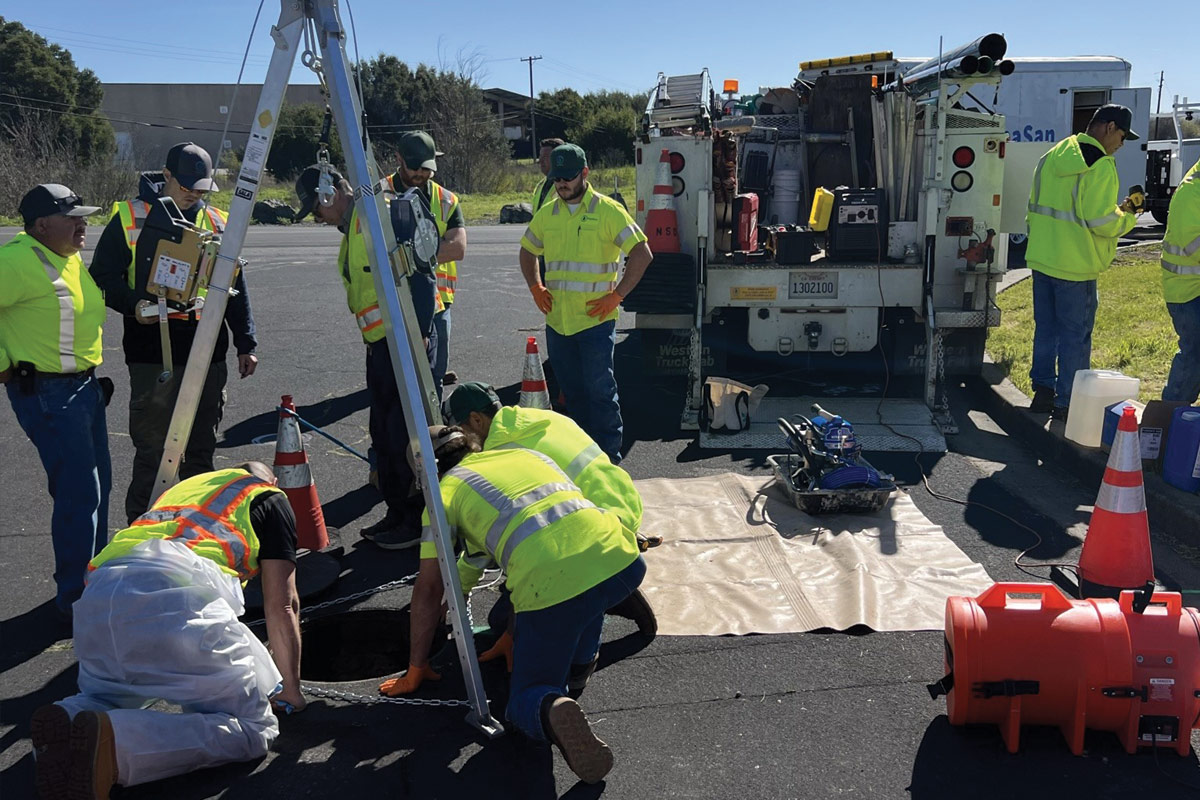
How to Incorporate AI Into Existing Condition Assessment Programs
As our buried linear infrastructure continues to deteriorate, our ability to efficiently assess sewers and focus rehabilitation and replacement treatment strategies where they are most needed is of critical importance.
The use of CCTV inspection data using a standardized system of coding pipe features and defects has been a key feature of condition assessment programs for years, but the introduction of artificial intelligence (AI) to the condition assessment process is relatively new.
Artificial intelligence in sewer condition assessment is often characterized by the combination of automated defect recognition (ADR) and machine learning (ML), where ML is the algorithmic process that uses mass training data to help software improve through trial-and-error experiences to make better decisions and ADR is the software output that can identify defects and features observed within each broken-down frame of the video.
The concept of using AI on condition assessment programs is to reduce labor hours by increasing the speed and accuracy required to either code video to industry standards or perform quality control review on data received. Manually reviewing video can be monotonous and time consuming where coding defects and features are subjective where errors and omissions could be prevalent. Our research indicated that the average video is reviewed four to five times from the time of production to the time the results have been analyzed and used to assign a rehabilitation strategy for that one asset. The use of AI can significantly reduce that time, leading to a more efficient condition assessment process.
Historically, condition assessment programs consisted of a CCTV contractor cleaning and inspecting sewer assets to code the asset and delivered to another group (usually the asset owner or consultant) to condition assess by certified professionals. The condition assessment team would review the data and videos for QA/QC purposes then review for rehabilitation treatment assignment and develop a rehabilitation program to meet the needs of the asset owner based on the finalized data. AI can be incorporated into the condition assessment process to reduce labor hours on the project in several ways from the initial contractor inspection process to the final review process.

Contractor Use Case
There are many factors that can impact production rates of CCTV contractors in the capture of data, some of which they can control and some of which they cannot. Pipe material type, location, age of infrastructure, weather, and existing pipe debris levels can all have an influence on production.
Most CCTV contractors capture coding data as they inspect the pipe. Known in the industry as “coding on the fly,” pipe material and age of infrastructure can limit progress depending on the number of features and defects that require coding.
Introducing AI can improve the speed of this process by instead of coding on the fly, coding is done post-video capture, enabling the CCTV contractor to obtain video without stopping to code. The video can then be run through an AI platform to produce the coding without human intervention. The contractor can then use human labor to simply perform quality control on the data prior to submission.
Alternatively, should the contractor choose to code on the fly, AI can be used to perform quality control. Once the field video and data are brought back to the office, the video can be run through the AI platform to provide QA/QC and confirm defects and features already coded or detect other defects not coded by the operator prior to submission. The process will ensure correct data is being submitted, and still lead to labor savings.
Condition Assessment Team Use Case
The condition assessment team can incorporate AI into the assessment process at various stages of the review. It can be used for the initial quality control for verification of data as well as detection of uncoded pipe features and defects. AI can also be used once a human has completed some level of quality control where AI can use the inputted data to again validate and detect pipe features and defects and reproduce an adjusted coding report.
The use of AI will reduce the overall time spent reviewing and coding video resulting in a more cost-efficient project, and the labor time saved can be better spent using the AI results to generate capital improvement programs (CIP), state of good repair (SOGR) programs and emergency repair programs.
Some AI platforms available on the market also incorporate advanced condition assessment features and GIS functionality to assist teams in making decisions on replacement and rehabilitation of the inspected asset.
The use of customizable decision trees and other similar features can use the finalized data to recommend the best rehabilitation treatment to be assigned to the asset or to geographical clustering of assets. These optimized rehabilitation decisions can be made based on available rehabilitation technologies in the region and have user inputted pricing data to develop rehabilitation and maintenance budgets.

Municipal Government Use Case
Cities, municipalities, sewer and water utilities, and public works departments can all take advantage of AI and advanced condition assessment features should they wish to develop and implement the rehabilitation and maintenance strategies themselves. A review of the submitted data along with the use of the AI platform decision tree type functions can produce for the city or municipality a rehabilitation treatment based on sound engineering principles and experience.
Through AI and the automatic detection and validation of codes, owners can confirm the performance of the technology vendor and their operators to report on their inspection coding quality for continuous improvement or future procurement purposes.
Another case of AI for the owner of the assets is the modification of their CCTV inspection specifications to allow for CCTV video inspections be submitted without coding, introducing a possible cost saving measure to the project. Less time is spent in the field and would allow the Contractor to increase their output and could allow for the scope of work to increase. The video is then submitted with just the header data for the asset for the AI to run in the background and code the pipe and be QA/ QC’ed by the asset owner as opposed to the contractor. Further savings could be seen if the asset owner has their own CCTV video equipment where AI would be run in a similar manner and thus reducing their field and review time.
In summary, the use of artificial intelligence in condition assessment programs can save the project time and money. Its use can redirect labor hours from site attendance to video review to producing and implementing rehabilitation and maintenance programs.
End users of AI programs should ensure a robust QA/QC process using certified industry professionals and carefully consider their requirements and the features they require to successfully incorporate AI into their condition assessment programs.




